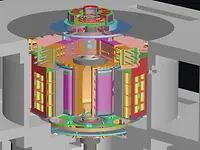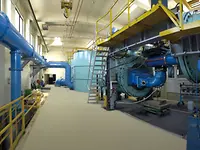3D-Printing with Sauber Technologies
Success built on sustained innovation
Research & Development in ANDRITZ
Hydropower is a mature industry, but long-term success is still dependent on continued innovation, a strong research and development program, and a diverse, engaged workforce able to bring new ideas to fruition.
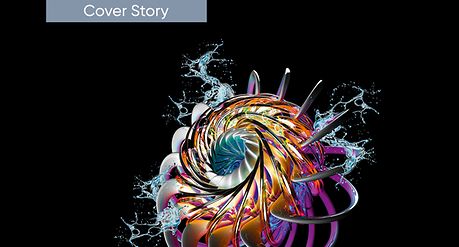
With well over 180 years of success in hydropower, there has been one constant throughout the history of ANDRITZ – a rock-solid commitment to innovation. Today, that spirit of innovation is more important than ever as we try to navigate through some of the biggest environmental challenges the world has seen.
Global warming, loss of biodiversity, and pollution of our rivers and oceans are just some of the pervasive issues we face and all are areas where innovation in hydropower has a role to play. Even in a mature industry like hydropower, with its huge engineering legacy, research and development (R&D) remains critical to improve performance and develop solutions to new challenges as they emerge. Finding these answers relies on precise analysis of complex rotating machines and associated fluid dynamics but for solutions to be implemented they must be cost-effective, efficient, financeable and competitive, even when the best solution is a tailor-made bespoke item.
The innovation at the core of ANDRITZ is underpinned by vast experience in hydropower and sustained investment in building a solid foundation of R&D. However, successful delivery of such advances also requires a diverse workforce willing to bring new ideas and perspectives through from concept to completion. For this reason, our workforce is our most valuable asset.
"Our R&D investment philosophy is driven not only by a requirement to meet today’s market needs, but also to prepare for the challenges of the future energy transition."
Sustained R&D investment
ANDRITZ considers it vital to maintain a leadership role in R&D, especially key growth markets such as pumps and pump turbines. An excellent example of this sustained R&D investment comes from the recent inauguration of the world’s most powerful hydraulic test rig. Located in Linz, Austria, the universal test rig is fully compliant with the relevant IEC standard and can test model hydraulic machines like hydropower turbines from low head bulb units right up to multi-stage high pressure pumps at heads of up to 250 m and with flow rates of up to 1.8 m3/s.
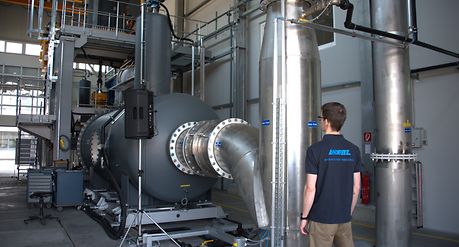
Testing for the best
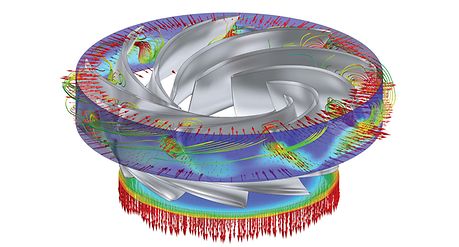
Visualization of a pump-turbine back-flow calculation.
To give some idea of the scale of this investment, construction of the facility took around one year. Its operations will be matched with other advanced technology from ANDRITZ, such as the proprietary Metris all-in-one platform which will be used as a framework for the automation systems. As a universal high-performance test rig for Kaplan and Francis turbines, storage pumps and pump turbines, and both vertical and horizontal machines, the test rig will support hydropower advances in many fields. But it forms just part of a new high-performance cluster for sophisticated CFD simulations and the in-depth investigation of hydraulic phenomena such as accurately assessing the impact of changing operational requirements on fatigue. The test rig was delivering important customer data almost immediately for a specific customer project that had a very large model inlet structure. For a more detailed look at the new test rig please turn to this article.
Reducing environmental impacts with R&D
Alongside more efficient and flexible machines that maximize the capacity and economic potential of hydropower plants, one of the key areas of research concerns the environmental impact of hydro turbines. An area of particular interest are the fish-friendly designs which are becoming increasingly important considerations in hydropower investments.
Hydraulic and mechanical design decisions can have a major impact on the survivability of fish as they pass through a hydro turbine. Design changes such as reducing the gaps between stationary and rotating elements can reduce the likelihood of fish being trapped. Minimizing cavitation can also have a big impact, as do other influences such as the angle of the guide vanes and the use of a runner blade design with a blunt leading edge. Inevitably, all of these developments are underpinned by extensive CFD modelling as part of an appropriate R&D program. ANDRITZ, for instance, uses a biological assessment tool supported by CFD to record the various stressors on fish species and has been using fish-friendly designs for its equipment since the early 1990s.
"ANDRITZ focuses on fish-friendly solutions, combining hydraulic expertise and biological knowledge to ensure efficient technology and healthy fish populations."
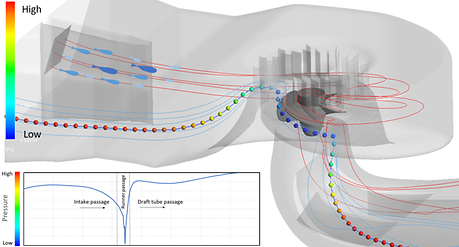
Fish-friendly designs; Tracking streamlines through the turbine
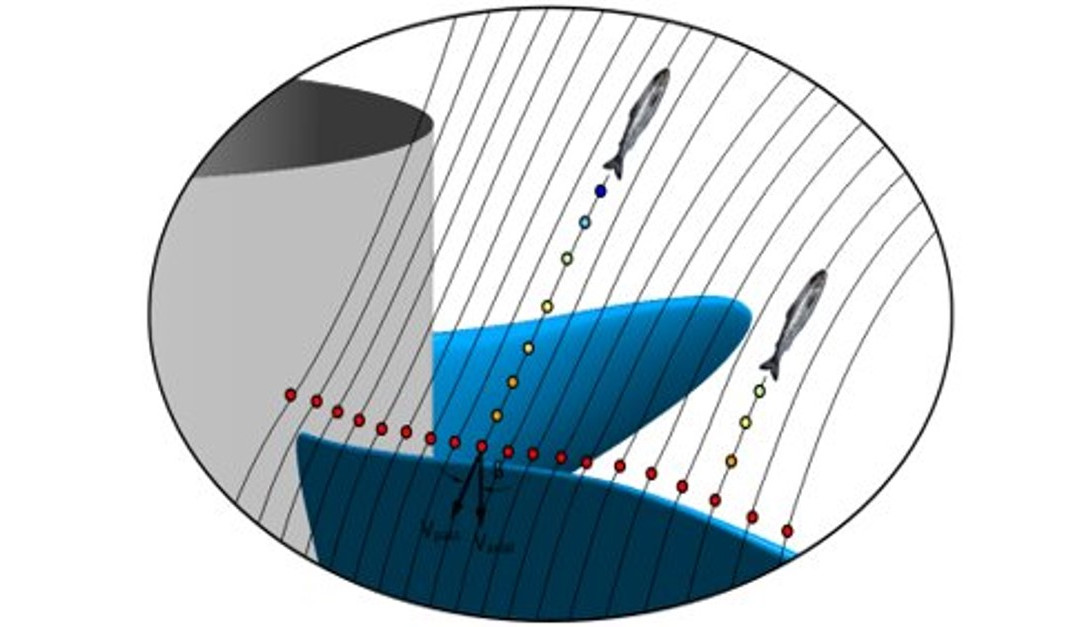
Detail of runner passage
Reducing the potential environmental impact of hydropower was also behind a decision to create oil-free turbines. Reducing oil and other kinds of contamination in water courses is an important environmental improvement. To date, ANDRITZ has well over 130 oil-free Kaplan runner references featuring machines of the largest diameters, outputs, and heads.
Again, R&D work is essential for developing more attractive solutions that protect the environment and further enhance the sustainability of hydropower. ANDRITZ has a dedicated research department that is wholly focused on minimizing the environmental impact of its machines during their operation.
A culture focused on sustainability through diversity
Sustainability is a critical factor in long-term success and ANDRITZ confirmed its commitment by launching the “We Care” sustainability program in June 2021. Combining all corporate sustainability activities under a single Environmental, Social, and Governance (ESG) banner, the program sets out defined targets and goals, such as halving its carbon footprint by 2025 and reducing water consumption and waste. Read more about the ANDRITZ ESG targets.
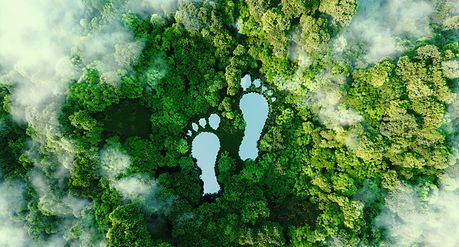
ESG - The ANDRITZ approach to sustainability
Of course, R&D will play a key part in achieving these important goals but progress will also depend on building a diverse team that can bring different perspectives and insights into play, as well as more creative solutions. A company with a diverse workforce can draw on a wide range of experiences and better understand the needs of their customers too. A key part of the We Care program and at the center of the ANDRITZ social focus is to ensure employee satisfaction, health and safety, and diversity.
With modern digital communications tools it is possible to build-in diversity across a hydraulic turbine development program by distributing different engineering, design, and test rig elements across the globe, bringing together expertise and experience between all the various teams. Our R&D departments are also key areas where we have been successful in promoting gender diversity. We are honored to have many talented women working in various technical areas. HydroNews talked with Sigrun Fugger, Hydraulic Project Engineer at ANDRITZ Hydro Austria, about her experiences.
ANDRITZ is also very proud to bring its focus on diversity and international cooperation forward through its membership of external organizations and strong relationships with many academic institutions. For instance, the Global Women’s Network for Energy Transition (GWNET) empowers women to build careers in the energy sector through interdisciplinary networking, advocacy, training, and mentoring. ANDRITZ Hydro became a Corporate Member of GWNET earlier this year and has already welcomed a group of international GWNET students to the ANDRITZ Hydro headquarters in Vienna. Young female students from the FH Upper Austria University of Applied Sciences in Wels are also regular visitors to the ANDRITZ laboratory at Linz where they are able to gain hands-on experience in hydropower engineering. In this edition of HydroNews we feature an interview with GWNET’s Barbara Fischer-Aupperle and Christine Lins about their work and the importance of women in the energy transition. Read more.
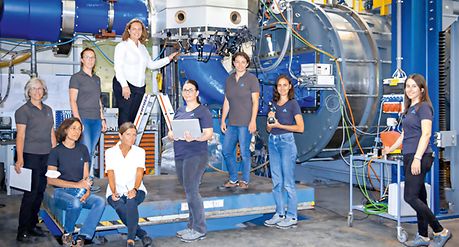
Pushing the boundaries of technology
With its strong R&D culture, diverse and motivated workforce, and many technical advances to be proud of, ANDRITZ nonetheless continues to seek out new opportunities to further enhance the technical capabilities and attributes that can help its customers. A great example comes from the world of Formula 1 motorsport racing where ANDRITZ has teamed up with Switzerland’s Sauber Technologies to advance its modelling capabilities. Model tests are a key step in hydraulic equipment development where the highest precision and high-speed manufacturing are very positive attributes. Working with the racing technology firm, ANDRITZ has brought world-class 3D printing capabilities to the hydro lab where it is paying dividends in the production of full models in which all the main components of a turbine are built, tested, and verified before prototype manufacturing can proceed. The modelling requires a great deal of precision but also quick delivery times. In a collaboration that has seen the two companies working together for over five years now, Sauber Technologies is providing tailor-made printing routines which have been developed together with ANDRITZ to produce the required parts quickly, and precisely. No geometric details that are relevant for the flow are neglected in the model-scale tests for turbines in hydropower. More details on this project can be found here in an interview with Jonathan Herzog, Chief Commercial Officer at Sauber Technologies AG.
"Some projects are easier, some are more challenging, but a satisfied client is always our priority!"
Sustained R&D is essential for technology companies looking to stay competitive and achieve long-term growth, and this is just one more example of our relentless focus on innovation. For ANDRITZ that means producing optimal hydropower turbine designs with the maximum possible power output, a high degree of operational flexibility, unmatched reliability, and superb environmental performance. To achieve that also means building and maintaining a dedicated, diverse, and highly qualified team. That really is our greatest asset.
Authors: David Appleyard, journalist and writer and Sigrun Fugger, Hydraulic Project Engineer ANDRITZ Hydro




